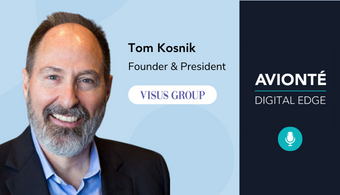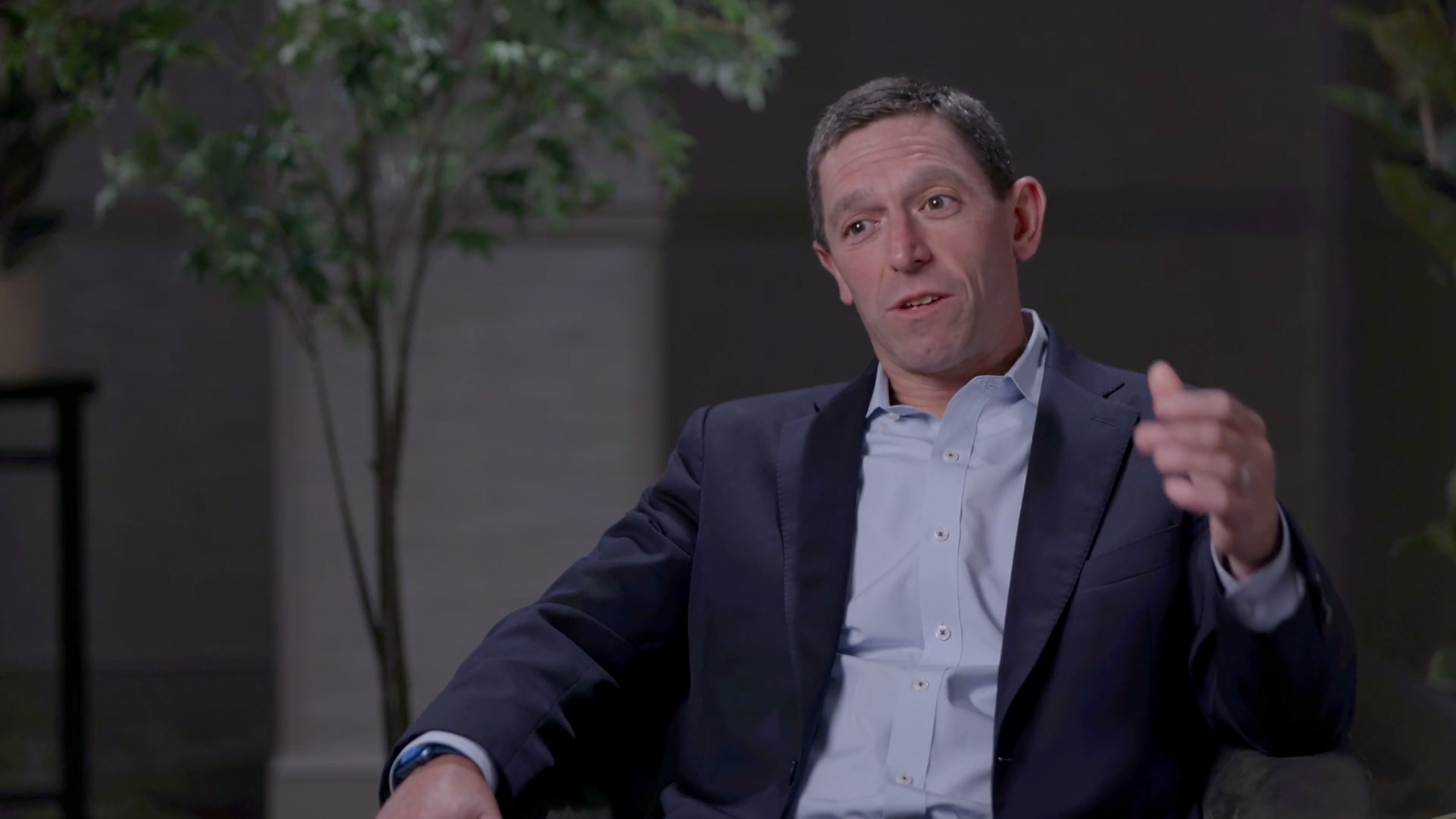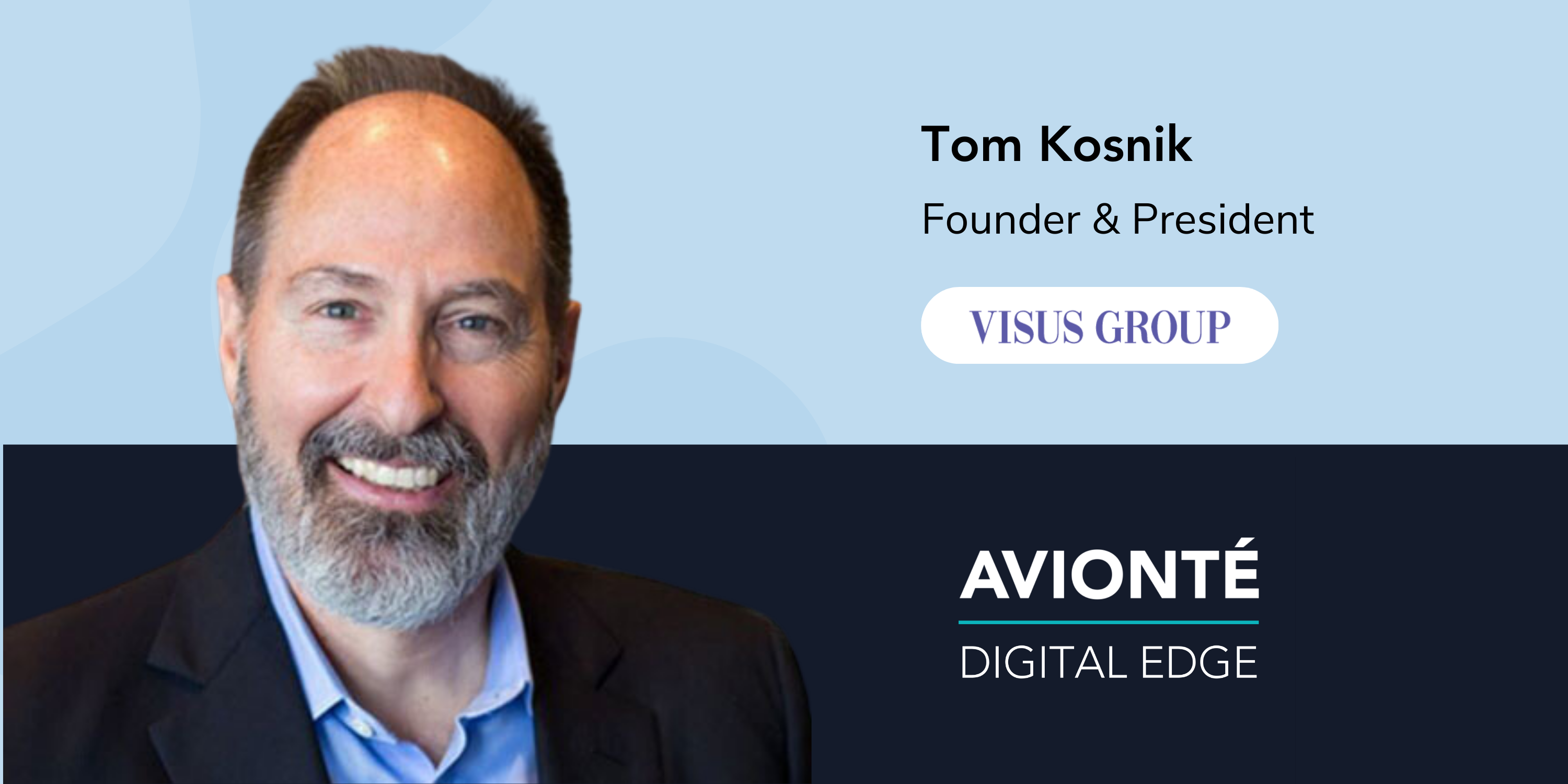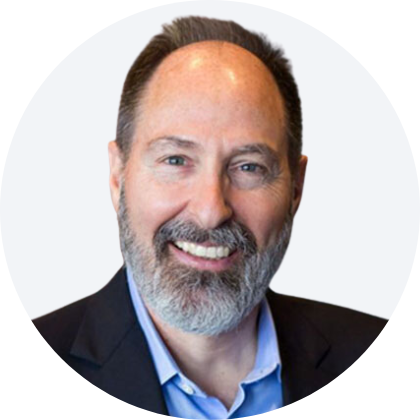In today’s fast paced world, staying ahead means embracing technological change. Despite industry employment levels plateauing at approximately 2 percent of the U.S. workforce over the past 30 years, technology seems to hold the key to staffing agency growth. Imagine a staffing platform that empowers recruiters to move from handling 10-15 active assignments simultaneously to managing 30, 40, or even 50 active assignments effortlessly.
As staffing leader, you understand the imperative to adapt, but often it’s not the lack of tools that holds us back. After all, true transformation goes beyond technology—it requires visionary leadership and strategic acumen to ensure successful technological selection and change.
So, what does it truly take to lead your agency to the forefront of technological innovation? On this episode of Avionté: Digital Edge, we’re joined by Tom Kosnik, President of Visus Group, LLC, who will share his insights on the leadership skills needed to drive technological change.
This is a partial transcript of the full conversation. Listen to the podcast episode for the complete discussion.
Chris Ryan: So, Tom, you and I have had several conversations about staffing agency owners and CEOs, and most of them understand that tech is important to their business. But I’ve also heard you say sometimes that staffing leaders acquiesce to a technology decision rather than leading with it. What did you mean by that?
Tom Kosnik: Many people in the industry have a challenging time determining the levels of technology expertise that they’re receiving. They meet people at the conferences. They may be reading other things. They speak to people that are technology consultants that may be saying something else. And they themselves are not technology experts.
So, they have a difficult time really understanding the levels of expertise and then how to access those levels of technology expertise to make a good decision. In addition to that, they come back to the office and all they hear is, “Boss, we need this new technology. Boss, we need that new technology.” And, many times, they just throw up their hands and say, “Okay, let’s just move forward with this.”
Chris Ryan: So, Tom, most people who get into staffing today are not technologists. Staffing is a people business and leaders in staffing are people leaders and are very focused on relationships.
So, if you’re a staffing CEO, and you’re hearing a lot of noise and you’re not sure whom you can trust, how do you approach this problem, and how do you lead when you’re not the expert?
Tom Kosnik: The clients who have made smart technology decisions, they start with the business model. In other words, they strip their business model down: is it a low-cost provider? Is it client intimacy? Is it an innovative business model? So, they strip the business model down and they really try to understand what it is that they’re trying to take to the marketplace.
Once they know that, then they can move forward with finding a technology that’s a best fit to help them implement that business model and the employee productivity levels that they’re seeking. You started the podcast out talking about, “Hey, we have 15, 20 people on billing these folks on the professional side of the staffing industry. How do we get them to 40, 50, 60, 75 people in billing? How do we get a B player to double their productivity? And is technology a piece of that? And I believe technology is a piece of that.
Chris Ryan: It sounds like part of the issue is that staffing agencies forget who they are or what their business model is when they start to have technology conversations.
Tom Kosnik: Chris, can a technology solve a specific problem? Absolutely. But that should not drive the big technology decisions. What should drive that is how do I increase productivity or gross profit for internal producer? So, it becomes a true core competency, something that my clients and my competitors have a tough time doing.
Chris Ryan: So, you mentioned core competency, and I think that’s an interesting discipline. If you’re an IT staffing agency in the Silicon Valley, your core competence is going to look very different than if you’re a high-volume, light industrial staffing agency in Toledo, Ohio. And presumably you’re going to have to have a point of view about how or why you are going to be better and differentiated from your competitors.
And that’s where the technology conversation must start. Is that that’s what you’re saying?
Tom Kosnik: That’s exactly what I’m saying. Yes.
Chris Ryan: So, what are some of the other significant mistakes that you see staffing leaders make? When you’re talking to staffing CEOs and executives, what kinds of conversations or challenges are they having with technology? And where do you think there are opportunities?
Tom Kosnik: So, a lot of organizations have individuals that are the Directors of IT or are CIOs, but they’re not qualified to be Directors of IT or CIOs. These are people that, way back when, when a company was five million in revenue, were hooking up printers to computers and played more of a help desk role.
And as the company grew, they got sucked up into that organization. And all of a sudden, they’re the Director of IT, but they really don’t have the skills. In other words, the job has now overgrown their capabilities to make good technology decisions. So, making sure that you have the right person in that seat is critical, and understanding the competencies you need in that job for that individual to succeed. That’s a big mistake – not having cross functional teams that are part of your decision-making team or helping you with developing the project plan or helping with overcoming resistance internally.
Chris Ryan: So, what does a healthy technology decision process look like? And how should he or she be driving this? And how should they be using experts and frontline users as part of the decision? When do you listen to your people and when do you direct your people in this process?
Tom Kosnik: A good process is going to start with the business model that you’re trying to take to the marketplace. You’re also going to access the right kind of leaders. You’re also going to do internal assessment surveys, data collection. You’re going to have a cross functional team that can be part of the decision.
The executive sponsor, it’s not necessarily their role to make the decision, but to create the environment and to encourage the environment to make the right decision, starting with the business model, accessing the right experts, collecting enough data internally, understanding what problems we have to solve, and asking the questions.
I don’t know if anybody, when they were making technology decision to a new ATS, if they’ve ever asked salespeople and recruiters, “What tool is going to help you put more people on billing? Help you go from 20 people to 30 people on billing?”
Put that underneath the microscope and get them involved. Putting a project plan together is another big piece of it. Having time frames when things are going to get done, dealing with adversity, dealing with the providers themselves who promise X, Y, and Z and deliver, E, G and F.
I want to say with the outside experts, their role is to provide high quality advice. So, a good external expert should be able to come in and say, “Hey, here’s a good solution. Here’s a better solution. Here’s the best solution, and here’s the pros and the cons and the benefits. Here’s the cost structure. Here’s the ROI or the results that you can expect.”
Versus you have an expert in the industry that’s tied to a certain solution, and then that solution is the solution for every staffing company. And the frontline users, using them to help vet different tools, using them for constructive feedback, encouraging them to help with the resistance to change.
Chris Ryan: I do want to talk briefly about resistance to change, because, frankly, technology can be very scary, especially for frontline recruiters. And we hear that artificial intelligence is coming for our jobs.
So, how do you get people to embrace the idea that maybe they can do their workflows differently? Because, oftentimes, changing your process and your workflow go hand in hand with the technology that you’re selecting.
Tom Kosnik: So let me say two things here. One, get users involved in developing the plan and making the decision. That’s going to help tremendously in terms of overcoming the resistance to change.
And then success builds on success. Ideally you pilot in a smaller company. If you’re in a bigger company and you’ve got 30, 40 offices, have one or two offices pilot the new program. And then use those as case studies for the rest of the organization to follow that success. That’s just classic, organizational development wisdom there versus, rip the band aid off – all 350 people are going to go through this change all at the same time.
Chris Ryan: Let’s talk about return on investment and metrics, because I think that has a hand in the whole change management process. What is the role of metrics in making technology decisions and how do you drive it through the entire process?
Tom Kosnik: Yeah, and you don’t need to be a Six Sigma expert to do this. Again, I’m a firm believer that salespeople and recruiters, they want to know what they need to do in order to be successful. What does success look like at ABC staffing? Well, success is 50 people on billing and 750,000 of gross profit production.
When I hear stories, “Tom, we spent $600,000 on this new technology and our productivity went down. Now from an organizational development, we know that production is going to go down for three or four months until the technology or the new workflows are adopted. But then there should be tracking that shows productivity.
So, the ROI of any technology is did it or did it not increase gross profit production per internal producer? And then your performance metrics are always changing based on technology. But, there’s got to be a financial ROI model on every technology that you use.
Chris Ryan: At what point do you determine whether it’s the quality of the technology or the quality of the execution and implementation that are at fault? Oftentimes, we see a staffing agency that has technology, but isn’t putting it to use.
Tom Kosnik: There was a company that was $60 million in revenue. They were an engineering staffing company. And, they had this real fancy ATS system and a real fancy CRM system. And they hired me to do an assessment on the business because they weren’t happy with productivity.
So, we get into the focus group, and I start asking about metrics and productivity and tracking and uses of CRMs and tools and all that stuff. And the sales reps, they pull out a paper copy of a printed Excel sheet. I said, “Guys, what are you doing? You guys have this CRM.” So, who knows if that CRM is fancy and can help them do whatever they want to do if 80 percent of the time, the reps were not using the software.
Now, why are they not using the software? Is it too cumbersome? How easy is it to import data? How easy is it to save a note? How easy is it to set a pending call? And if it’s a series of clicks and scratches and get up and run around the desk three times and sit down, probably the technology.
Chris Ryan: I think you raised an important point, which is that oftentimes it’s those small tasks that you do over and over every day that are often critical in helping to get your work done. Or rethinking your workflows in such a way that you take the complexity out of whatever it is that you’re trying to do.
So, let’s talk a little bit about implementing technology and getting everyone on board when there are tradeoffs. One of the things that I’ve often seen when we’re making technology, decisions is that, oftentimes, a firm will lock into a favorite feature that somebody believes is critical to their business, but more broadly because they are focused on that feature. And they are giving away capabilities that would make them a lot more productive.
So how do you tackle that issue? And how do you tackle the issue of standardized training and tools as you grow a customer base?
Tom Kosnik: Bring in hard core data and analyze that data. I get these clients where you have the pull-down menu, and then you have the option to create certain responses. Well, after two weeks, you got 50 responses in there and then what happens? People stopped using it because it takes more time to go find the response. Well, it’s just faster for me to type it in all the time than to use the pull-down menu. And then it makes it less time efficient.
So, it’s again, getting folks in the room, showing them the data, showing them the case studies. Another client bought this tool and wanted to customize it. Finally, the vendor came, and they met with us, and they said, “Stop! Just use the tool at its basic level, the way it was built to work.” Okay, we’ll give that a shot. So, of course, they did it. Productivity just kept going up and up and up because people just want simple technology that works.
Now this is a management error. When management can’t get employees in a room and say, “Guys, here’s the case study, here’s the data. We can have six responses to this pull-down menu, period. What are they? Nobody else is going to add anything else in here.” So that’s where somebody at a manager level is making those decisions and directing those types of conversations.
Chris Ryan: I think what you’re saying here is that sometimes, without management intervention, the organization can grow its complexity to a point where the technology no longer has value, and that’s the time where leadership needs to look at the productivity metrics, look at the core operations of the business, and say, “We have to do something differently. We need to build organizational consensus, and we’re going to go in this direction.”
Tom Kosnik: I always advise my client, “Hey, just buy this tool and let’s get everybody utilizing 80 percent of this tool. Just start with the basics. In my CFO round table, the CFOs are always tasked with doing tech stack assessment – what technologies we need and which ones we don’t need. And, occasionally I hear, “We just stopped paying for that technology and shut it off and nobody ever complained.
It kills me when I hear, “Oh, we’re only using 20 percent of the capability of the software.” And they’re spending how much money per user per month? Again, that’s a management failure, Chris.
Chris Ryan: If we had to summarize, what kind of leadership is required to effectively drive technological selection and change? And what kinds of strategies do you recommend that leaders employ to bring about the transformation in their organizations?
Tom Kosnik: Leaders are the senior change agent. They fully embody that change is upon us and it’s coming fast and hard, and that they have to be the leaders of change. They spend time thinking about what’s coming out in two years, what’s coming three years out, what’s coming five years out.
So, there’s a visionary aspect, there’s a change agent aspect, and then there’s just an executive sponsorship slash cheerleader slash supportive of problem solving and implementation aspect.
And, again, tapping into the right people that can advise externally and internally is critical. And here’s where you just got to be honest with yourself. If you’ve got people internally that don’t have the capabilities or the knowledge, you may need to swap them out and find good cross functional teams, salespeople, recruiters, back office, etc. Don’t let only your recruiters make the final decision.
Guest
Tom Kosnik
Founder and President, Visus Group
Tom Kosnik, founder and president of the Visus Group is one of the staffing industry’s leading experts in organizational design, profitability improvement, and work culture transformation. Tom has coached and consulted hundreds of staffing executives throughout North America using his empirical-based “Organizational Development Business Model” (ODBM). Most notably, Tom is the founder of the Presidents RoundTable, a nationwide leadership forum program strategically aimed at helping staffing professionals collaborate and solve industry challenges.
Host
Christopher Ryan
Chief Strategy & Marketing Officer at Avionté
Christopher Ryan leads the Strategy and Marketing functions for Avionté. He brings more than three decades of consulting, thought leadership, and corporate experience in Human Capital Management.
About Avionté: Digital Edge
Modern technology has revolutionized the way we live, work, and play. It’s also what’s fueling the gig economy which has dramatically changed employment practices. So, what does that mean for staffing and contingent work? In our Avionté: Digital Edge podcast series, we will speak directly with industry experts to explore topics and trends related to the digital transformation of staffing and temporary employment in the US workforce.
Subscribe to Avionté: Digital Edge on These Platforms













